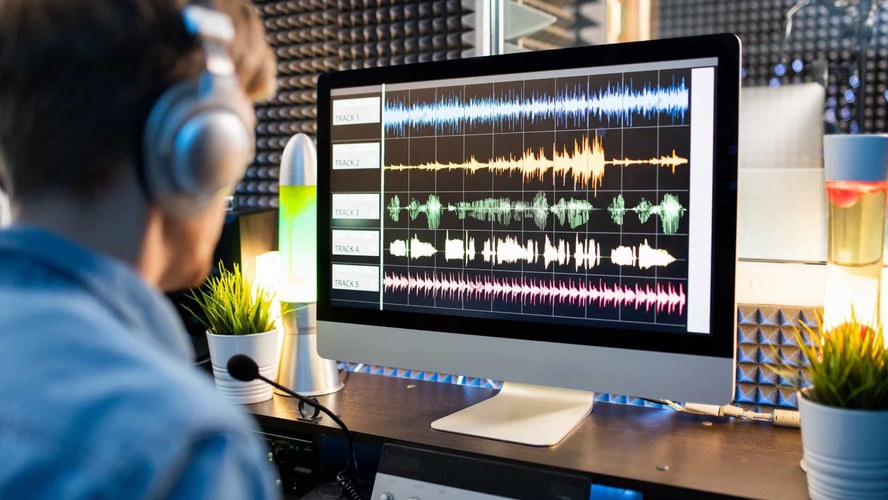Have you ever plugged in your guitar, hit record in your DAW (Digital Audio Workstation), and been surprised by a slight delay between when you play a note and when you hear it come back through your headphones? This frustrating phenomenon is called latency, and it can make recording a real challenge. In this article, we’ll explore the world of latency and buffer, uncovering how they affect your DAW and offering solutions to achieve a smooth and frustration-free recording experience.

What Latency Is and Why It Is Important
When working with digital systems, a slight delay can occur at the signal’s input and output stages. This delay is referred to as ‘latency’ in English. Latency is measured in milliseconds (ms).
Latency is critical because it directly affects how late you hear the signal being recorded or played back. Delays under 10 milliseconds might go unnoticed or be tolerable even if detected. However, delays exceeding 10 milliseconds begin to pose problems.
Imagine trying to record a lightning-fast guitar solo with a 40-millisecond latency. It would be like trying to dance with a partner who’s always a step behind! It might be technically possible if you try hard, but it is not exactly ideal for a smooth performance.
Buffer
Latency is directly related to a concept called buffer. Imagine a small, temporary storage space on your computer. In the world of DAWs (Digital Audio Workstations), this space is called a buffer, and it plays a crucial role in how quickly your computer can process audio information.
You can think of a buffer like a waiter taking your order at a restaurant. The waiter gathers your selections (audio information) and relays them to the kitchen (computer). A larger buffer size provides more space for the waiter to take and organize orders, but it takes a bit longer to deliver them. A smaller buffer size means quicker delivery, but there’s a higher chance of things getting dropped or mixed up.
By understanding the role of buffer, you gain greater control over latency in your recordings.
Latency Formula
The following formula can be used to calculate the system delay in milliseconds:
Latency (ms) = Buffer Size / Sample Rate [kHz]
It is important to note that the delay occurs twice when the signal enters the computer and exits back to analog. Therefore, the value obtained from the formula must be multiplied by two:
Latency (ms) = (Buffer Size / Sample Rate [kHz]) x 2
For example, let us calculate the total system latency in milliseconds with a 48 kHz sample rate and a 1024 buffer size:
Latency = (1024 / 48) x 2 = 42.67 ms
As another example, with a 44.1 kHz sample rate and a 256 buffer size, the total system latency is:
Latency = (256 / 44.1) x 2 = 11.60 ms
Yet, as another example, with a 96 kHz sample rate and a 128 buffer size, the total system latency is:
Latency = (128 / 96) x 2 = 2.67 ms
Using the formula above, you can calculate the latency of the system. However, it is crucial to remember that, in addition to the calculated value, the A/D and D/A converters on the audio interface will add approximately 3-5 milliseconds of extra latency to the system.
Two Key Points to Keep in Mind
As illustrated in the examples, reducing the buffer size and increasing the sample rate significantly decreases the system latency:
As the buffer size increases, latency increases.
As the sample rate increases, latency decreases.
To reduce latency, one can decrease the buffer size, but this will reduce the overall performance of the system. As always, a balance or compromise is necessary.
Chart: Buffer Sizes and Sample Rates
I have prepared a chart showing the latency in milliseconds for different buffer sizes and sample rates.

The latency times provided in the table are calculated as round-trip. A round-trip involves the signal being converted to digital, entering the computer, and being converted back to analog for playback through monitors or headphones. All latency times are given in milliseconds.
Having this chart at hand can be very useful.
Solutions for Latency During Recording
Now, let us discuss how to resolve the latency issue that is significant enough to negatively affect a musician’s performance during recording.
The first method is to reduce the buffer size to bring the system latency below 10 milliseconds. Unfortunately, this is not always possible. In sessions with many plug-ins, few computers can operate at low buffer sizes without errors.
The second method is to use the “zero-latency monitoring,” “input monitoring,” or “direct monitoring” feature available on most modern audio interfaces. This feature allows you to monitor the signal you are recording directly through the audio interface’s input (before it enters the computer). This prevents the delay in hearing the signal being recorded.
To make musicians comfortable during the recording session, you need to implement either one of these methods. In an ideal recording setting, the recording artist should perceive no latency at all.

Latency When Editing and Mixing
Now, the good news! Latency becomes less critical during editing and mixing compared to recording. When mixing, you’re shaping the overall sound of the song. While timing accuracy is crucial in recording, mixing focuses more on the aesthetic qualities – how instruments blend, the clarity of vocals, and the overall energy of the track. A slight delay won’t throw off the timing of the music itself, just the timing of your adjustments.
Conquer the Lag, Unleash the Music!
Understanding latency and buffer size is the key to a frustration-free recording experience. By finding the right balance between low latency and system stability, you can create a smooth environment where musicians can focus on what they do best: capturing their creative spark.
So, the next time you fire up your DAW, take a moment to consider your latency settings. With some knowledge and experimentation, you can eliminate the lag and return to what truly matters – making great music!




